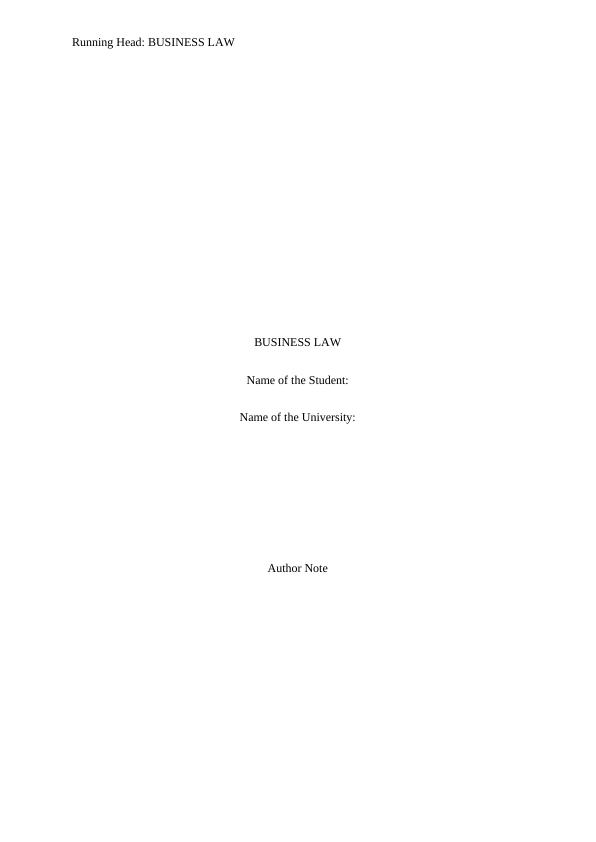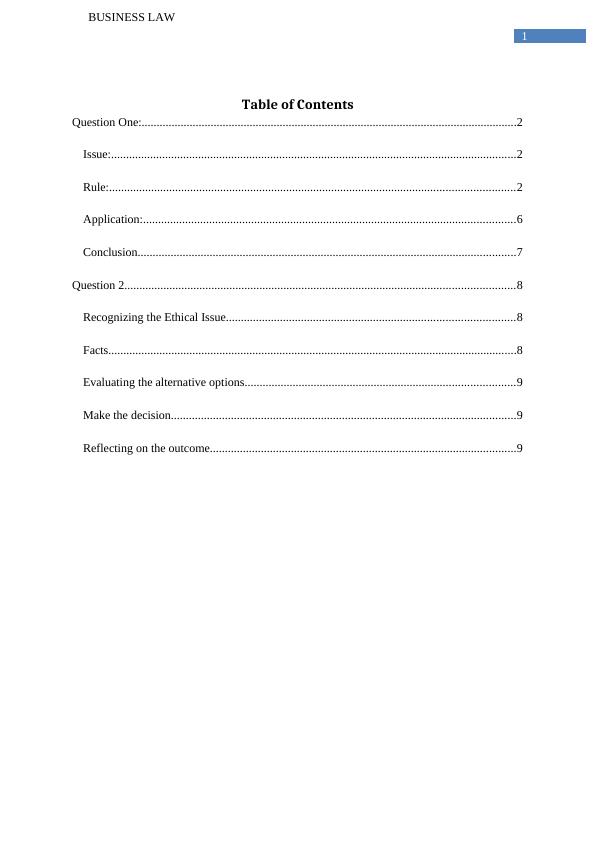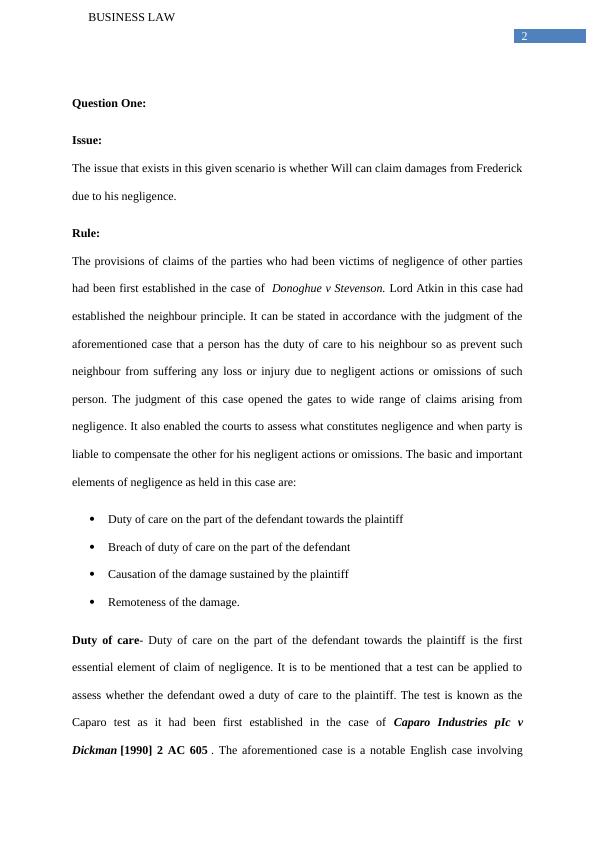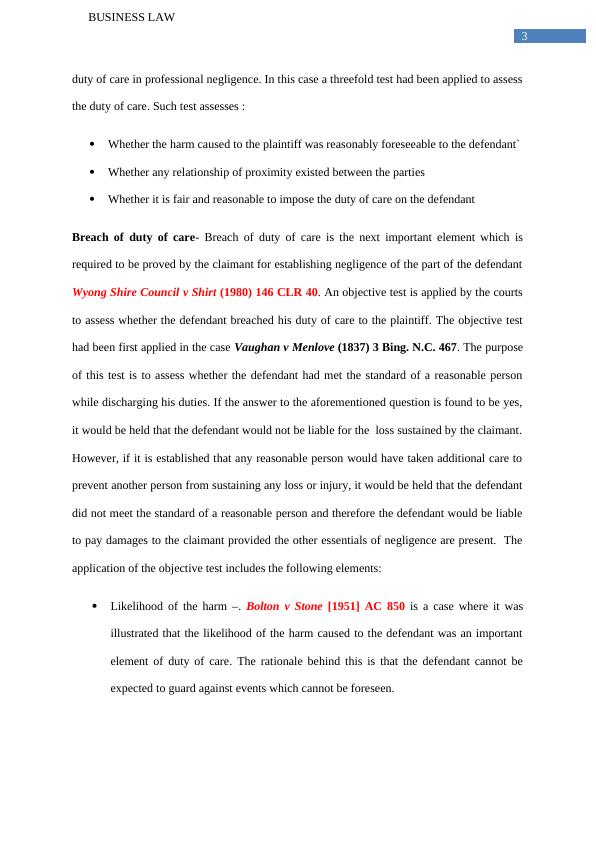Business Law: Negligence and Ethical Decision Making
12 Pages2896 Words243 Views
Added on 2023-06-12
About This Document
This article discusses the concept of negligence in business law and its essential elements. It also provides an ethical decision-making framework for a scenario involving an unsafe sculpture in an art gallery. The article covers the Caparo test, the objective test, the But for test, and the Wagon Mound case. It also discusses contributory negligence and its essentials. The subject is Business Law, and the course code is not mentioned. The article is relevant to students studying business law in any college or university.
Business Law: Negligence and Ethical Decision Making
Added on 2023-06-12
ShareRelated Documents
End of preview
Want to access all the pages? Upload your documents or become a member.
Understanding Negligence and Pure Economic Loss in Enterprise Law
|8
|1818
|493
Business Law and Ethics Assignment
|10
|2107
|88
Negligence and Pure Economic Loss in Construction: A Case Study Analysis
|10
|2398
|112
Commercial Law Issues - Assignment
|13
|2932
|18
Business Law: Negligence and Recovery of Economic Loss
|6
|1050
|191
Assignment on Elements of Negligence
|9
|2059
|84




